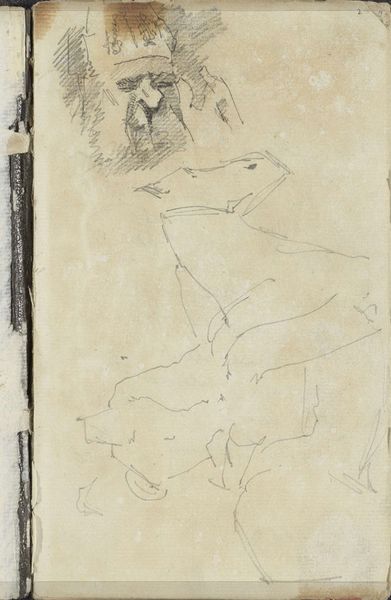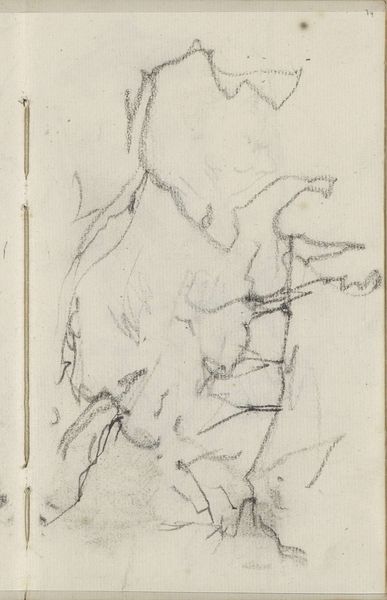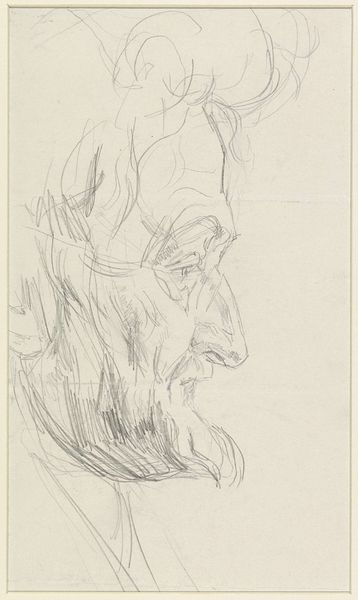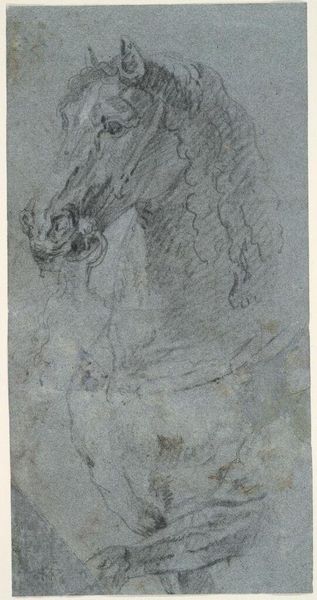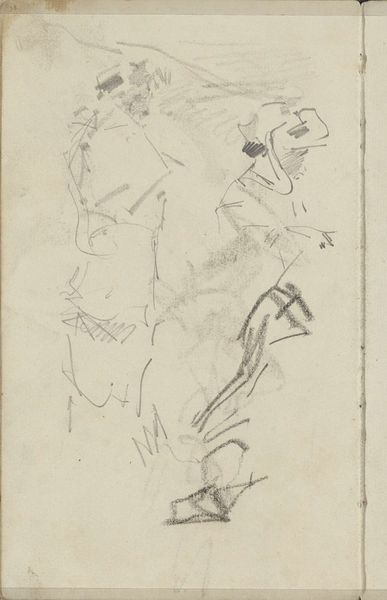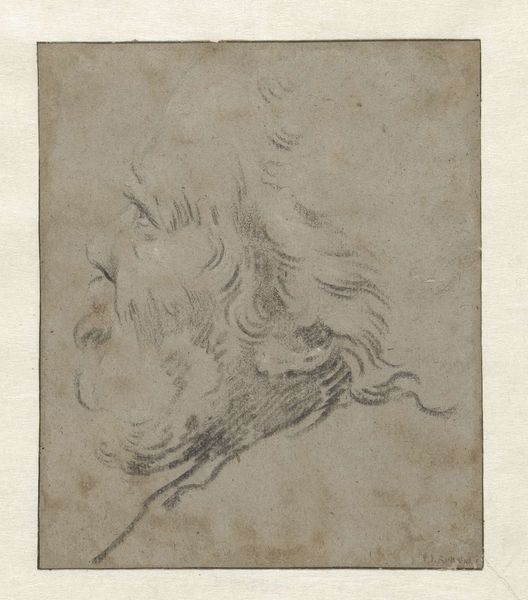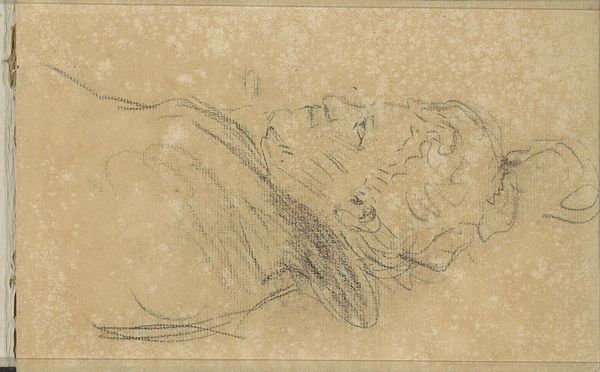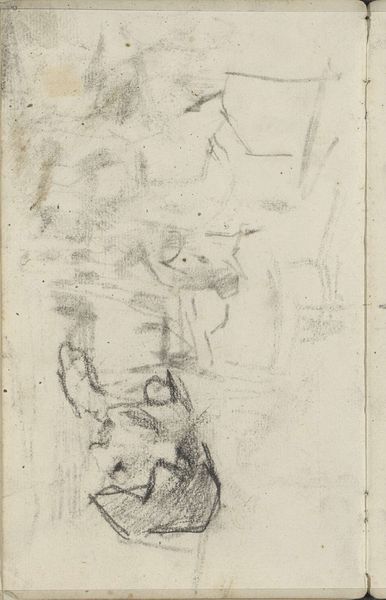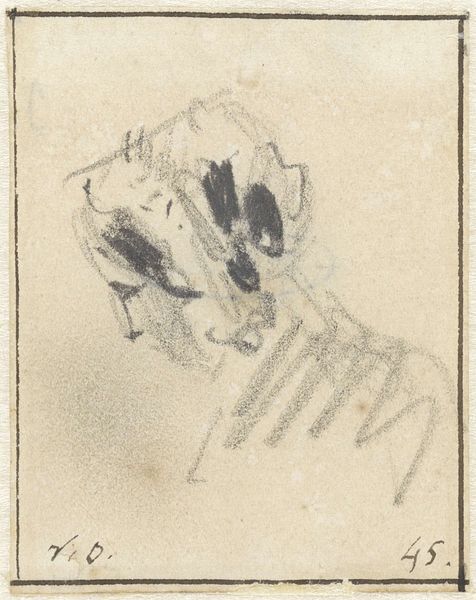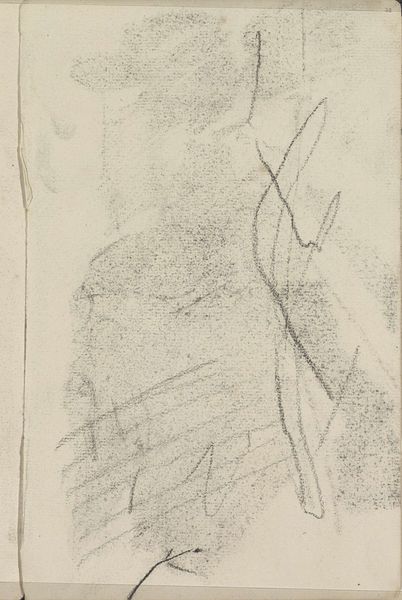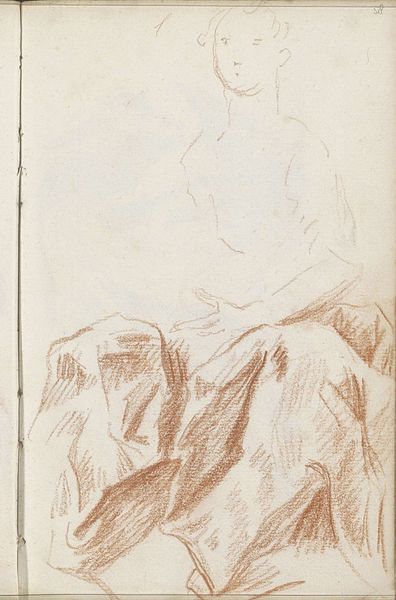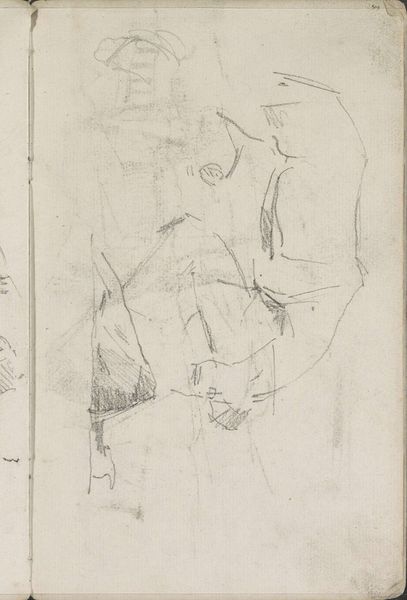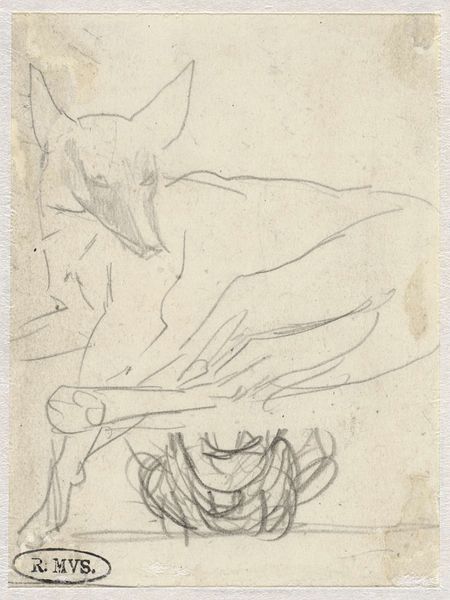
drawing, pencil
#
portrait
#
drawing
#
pencil
#
realism
Dimensions: height 125 mm, width 74 mm
Copyright: Rijks Museum: Open Domain
Editor: Here we have Jacob Maris’s "Head of a Goat," a pencil drawing from the late 19th century. It's quite a sketch, really. Raw and unfinished. What compositional elements stand out to you? Curator: The drawing is striking in its immediacy. Note how Maris captures the essence of the goat’s form with an economy of line. Consider the varying pressure applied to the pencil; heavier lines define the eye and horn, giving them prominence. The texture of the goat's hair, for example, is suggested through the repetition of light, rapid strokes. Observe also the compositional choices—how the artist leaves large areas of the paper untouched, drawing our focus to the meticulously rendered head. Editor: The contrast between the defined areas and the blank space is interesting, as if the goat is emerging from nothing. Why is there this difference in how he defines the eye and the horns but then lets other shapes fall into less firm construction? Curator: The contrast you observe serves to emphasize specific formal qualities of the subject, the planes of the face and the protruding horn are delineated more completely. It emphasizes what is essential for recognition while inviting the viewer to engage actively, to fill in the missing details through their own perception. Does that incomplete expression diminish the overall impact of the work, or does it somehow enhance it? Editor: I think it adds to it. The sketch-like quality makes it feel more alive, like a fleeting observation, but still the character shines through. Curator: Precisely. And through this concentration on form and line, we can begin to appreciate Maris' skill in distilling the animal to its most fundamental visual components. Editor: This exercise helped me see how focusing on technique brings the work to life. Curator: Indeed. Maris’s “Head of a Goat” exemplifies how careful consideration of the elements and principles can allow viewers to grasp an artwork's purpose without relying on external context.
Comments
No comments
Be the first to comment and join the conversation on the ultimate creative platform.
